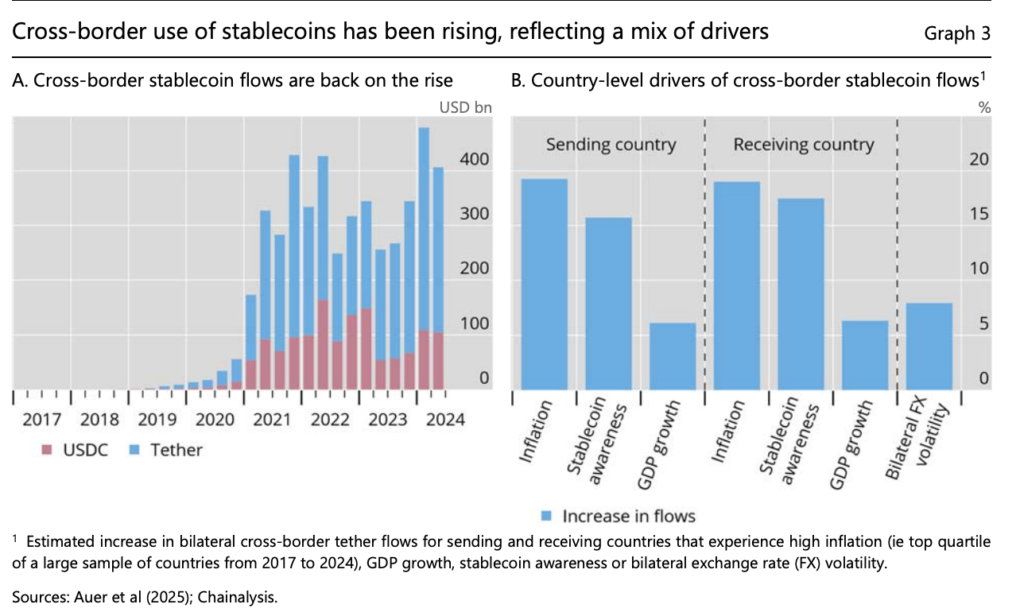Crypto
Spot Ether ETF Shockwave: $533M In One Day Sparks $8.3 Billion Ethereum Rush
Spot Ether ETF Shockwave: $533M In One Day Sparks $8.3 Billion Ethereum Rush. “Ethereum ETPs are just getting started,” says Bitwise CIO as 13-day inflow streak sends shockwaves across crypto markets with over $4B pumped in — and growing

In a stunning display of institutional confidence, Spot Ether ETFs have recorded a 13-day inflow streak that’s now pulled in over $4 billion, with a single-day spike of $533 million this week — a surge that’s setting new records and rattling the crypto establishment.
Table of Contents

At the center of this financial wave is BlackRock, the global asset management titan whose iShares Ethereum Trust (ETHA) brought in a whopping $426.22 million in a single day. That move alone pushed the fund’s total assets beyond the $10 billion threshold, making it the most dominant player in the Ether ETF arena.
Following closely is Fidelity with its FETH fund drawing in $35 million, contributing to what experts are calling a “massive rebalancing” in the market’s perception of Ethereum.
“Spot Ether ETF inflows have been driven by falling BTC dominance and growing institutional appetite for ETH exposure,” explained Vincent Liu, Chief Investment Officer at Kronos Research, in a recent statement to Cointelegraph.
From Momentum to Mania: How $8.3 Billion Found Its Way Into Ethereum
Cumulatively, all Spot Ether ETFs have attracted over $8.3 billion in net inflows — more than double the $4.25 billion just two weeks ago. The funds now hold $19.85 billion in assets under management (AUM), equivalent to 4.44% of Ethereum’s entire market cap, showcasing how this corner of the market is maturing rapidly.
July 16 marked a historic high, with $726.74 million funneled into Ether ETFs in a single day. July 17 followed with $602 million, making back-to-back milestones that analysts say are only the beginning.

But that’s not all. According to Matt Hougan, Chief Investment Officer at Bitwise Asset Management, investors are still “significantly underweight” on Ethereum compared to Bitcoin.
“Ethereum’s market cap is about 19% that of Bitcoin, but Ethereum ETPs have only 12% of the assets. That gap is likely to close, and quickly,” Hougan said in a post on X.

$20 Billion ETH Demand Incoming?
Hougan went further, projecting that demand for Ethereum from ETPs and corporations holding ETH on their balance sheets could reach $20 billion within a year. At today’s prices, that translates to roughly 5.33 million ETH.
In contrast, Ethereum is expected to issue only 800,000 ETH during that time — meaning demand could outstrip supply by nearly 7x.
“In the short term, the price of everything is set by supply and demand. And for now, there is significantly more demand for ETH than there is new supply. I suspect we go higher,” he noted.
Kraken Withdrawals Add to the Mystery
Adding to the bullish tension, Lookonchain, a popular blockchain analytics platform, reported on Wednesday that five new wallets withdrew a combined 76,987 ETH (worth around $285 million) from Kraken — further pointing to long-term accumulation and a shrinking exchange supply.
“This isn’t random. It’s strategic,” a prominent crypto analyst commented on X, hinting at coordinated institutional activity.
Meanwhile, Bitcoin ETFs Stall
While Ethereum surges, Bitcoin ETFs are showing signs of fatigue. Spot Bitcoin ETFs posted a $67.93 million net outflow on the same day Ether roared, with Bitwise’s BITB and Ark Invest’s ARKB leading the withdrawals at $42.27 million and $33.18 million respectively.
Only Grayscale’s GBTC, the largest legacy Bitcoin fund, saw a modest $7.51 million inflow — a far cry from the massive movements in Ether-based products.
The Bigger Picture: Ethereum’s Utility Is Winning
There’s a growing narrative that Ethereum’s multi-purpose network — which supports smart contracts, NFTs, decentralized finance (DeFi), and staking — is more appealing to institutional investors looking for long-term growth and utility.
“Bitcoin is seen as digital gold, but Ethereum is the foundation of a new internet. That’s why the capital is flowing in this direction now,” said a senior analyst at CoinShares.
This sentiment reflects a fundamental shift in investor mindset. As the regulatory fog clears and more companies incorporate Ethereum-based assets into their portfolios, we may be witnessing the beginning of a new crypto market cycle — one led not by speculation, but by structured investment vehicles like ETFs.
for more news www.DailyGlobalDiary.com
Tech
CoinFund President Slams Basel Rules for Quietly Crippling Crypto Growth
CoinFund president Chris Perkins warns that strict Basel Committee capital rules are driving banks away from crypto, creating a subtle but effective blockade.

Global banking regulators may not be banning crypto outright, but they might be silently choking its growth through rigid capital rules. That’s the warning from Chris Perkins, president of digital investment firm CoinFund, who says current banking standards are making cryptocurrencies “too costly to hold” for major financial institutions.
The Basel Committee on Banking Supervision (BCBS), which designs international banking standards, requires banks to set aside high capital reserves when dealing with crypto assets. According to Perkins, these rules drastically reduce a bank’s return on equity (ROE)—a key measure of profitability—making the economics of offering crypto services unattractive.
“It’s a different type of chokepoint,” Perkins told Cointelegraph. “It’s not direct. It’s a very nuanced way of suppressing activity by making it so expensive for the bank to do activities that they’re just like, ‘I can’t.’”
He added that banks naturally steer capital into high-ROE businesses rather than low-ROE ones, meaning that under the current Basel rules, crypto becomes a financial non-starter for traditional institutions.
Clash Between Old Finance and New Networks
This isn’t the first time Perkins has clashed with regulators. Back in April, he criticized the Bank for International Settlements (BIS)—the so-called “central bank of central banks”—for pushing know-your-customer (KYC) rules and legacy compliance standards onto decentralized finance (DeFi) protocols and stablecoins.
Perkins argued that such measures undermine the core principles of permissionless networks, where anyone can transact without centralized gatekeepers.
He further warned that the real risk to the financial system lies in the asymmetry between old and new infrastructures.

BIS Pushes CBDCs, Rejects Stablecoins
The BIS has consistently taken a hard stance against cryptocurrencies. In an April report, it claimed that digital assets could “destabilize the financial system” and even widen the global wealth gap. By June, the institution doubled down with a report titled “Stablecoin Growth: Policy Challenges and Approaches,” declaring that stablecoins fail as money and could create systemic risks.
At the same time, the BIS has been a loud advocate for central bank digital currencies (CBDCs)—a state-backed alternative to privately-issued crypto.
For crypto advocates like Perkins, this signals a coordinated effort to slow down decentralized networks while fast-tracking centralized digital currencies.
The Bigger Picture
Perkins’ remarks highlight a growing tension between traditional banking regulators and the crypto sector. While no outright bans are in place, the economic disincentives created by Basel’s capital rules could become one of the most effective “chokepoints” for the industry.
As governments and institutions push harder for CBDCs and regulated digital assets, the question remains: Will permissionless crypto survive in a world where holding it is made prohibitively expensive for the very banks that once powered global finance?
Crypto
16 Day Surge Spot Ether ETFs Add 453 Million in Inflows and Investors Say This Is Just the Beginning
Spot Ether ETFs continue their explosive streak with $453 million in inflows led by BlackRock as bullish momentum shows no signs of slowing

In an unprecedented run that has crypto bulls cheering, spot Ether ETFs have now notched their 16th consecutive day of net inflows, with Friday alone contributing a staggering $452.72 million, according to fresh data from SoSoValue. The bulk of that came from BlackRock’s iShares Ethereum Trust (ETHA), which alone pulled in $440.10 million, pushing its total assets under management to an industry-leading $10.69 billion.
The cumulative momentum of spot Ether ETFs has propelled total net assets across all U.S.-based funds to $20.66 billion, now representing 4.64% of Ethereum’s total market cap. With cumulative net inflows reaching $9.33 billion since their launch, Ether ETF adoption is clearly gathering pace—particularly among institutional investors betting big on Ethereum‘s long-term utility in DeFi, staking, and smart contracts.

With surging interest in stablecoins and tokenization, we expect strong ETH ETP inflows for a long time to come,” noted Matt Hougan, Chief Investment Officer at Bitwise, on X earlier this week.
BlackRock Dominates While Grayscale Lags
While BlackRock continues to dominate the leaderboard in the spot Ether ETF landscape, Bitwise’s ETHW trailed far behind with $9.95 million in inflows. Fidelity’s FETH also added a modest $7.30 million. On the flip side, Grayscale’s ETHE saw continued redemptions, logging a $23.49 million net outflow on the day, bringing its cumulative losses to a staggering $4.29 billion.
This divergence in performance among issuers is becoming increasingly pronounced, as investors flock toward more transparent and lower-fee funds offered by BlackRock and Fidelity, while older legacy products like Grayscale’s ETHE lose their shine.
Institutional Demand Outpacing Supply
What’s driving the surge in spot Ether ETFs? Experts say it’s a mix of improved regulatory clarity, Ethereum’s growing dominance in decentralized finance, and a belief that ETH will play a central role in future tokenized financial systems.
Matt Hougan estimates demand for Ether via ETFs and other exchange-traded products (ETPs) could reach $20 billion in the coming year, equivalent to 5.33 million ETH at current prices. That’s particularly significant when compared with Ethereum’s estimated issuance of just 0.8 million ETH in the same time frame — a mismatch that could lead to a supply squeeze.

We’re looking at a scenario where demand may outpace new ETH issuance by nearly 7X, said Hougan.
Spot Ether ETFs Outshine Bitcoin Counterparts
While spot Bitcoin ETFs also posted a rebound with $130.69 million in net inflows on Friday, they trailed Ether funds significantly. Bitcoin ETFs had seen three consecutive days of outflows earlier in the week totaling over $285 million, suggesting some rotation of investor interest toward Ethereum-based products.
Despite this, the cumulative total for spot Bitcoin ETF inflows remains higher, at $54.82 billion, with total net assets standing at $151.45 billion.
However, recent enthusiasm and performance metrics clearly favor spot Ether ETFs, especially as Ethereum’s broader use case continues to attract forward-thinking institutional players.
Will the 16-Day Streak Continue?
With daily inflows still going strong — including peak days like $726.74 million on July 16 — analysts are watching closely to see just how long this bullish streak in spot Ether ETFs can last. Since the streak began on July 2, total net inflows have more than doubled from $4.25 billion to over $9.33 billion.

And with Ethereum’s upcoming ecosystem upgrades, including developments around Layer 2 scaling, restaking, and more robust institutional-grade staking solutions, there’s reason to believe that investor appetite for spot Ether ETFs is far from satisfied.
Final Thoughts
This historic 16-day streak in spot Ether ETFs not only highlights a turning point in crypto investing but also shows how Ethereum’s evolving role in finance is driving real-world demand. While BlackRock leads the charge, the entire industry appears to be gaining ground in reshaping traditional portfolios.
If this trajectory holds, 2025 might just be the year Ethereum goes fully institutional.
Crypto
7 Big Wins as Ether ETFs Celebrate One Year with $16.6 Billion Milestone and Bullish Momentum
Ether ETFs close out their first year with strong inflows and over $16.6 billion in assets, fueling talk of staking and future crypto ETF innovations.

It’s been one year since Ether ETFs officially launched in the United States, and the celebration couldn’t have come at a better time. Marking their anniversary on July 23, the U.S.-based spot Ether ETFs have not only survived the rocky waters of the crypto market — they’ve thrived, now commanding over $16.6 billion in assets under management and locking in an impressive $8.69 billion in net inflows to date.
The U.S. Securities and Exchange Commission (SEC) gave the green light for spot Ether ETFs to trade in July 2024. Since then, major financial players like BlackRock, Fidelity, 21Shares, VanEck, Bitwise, Franklin Templeton, Invesco, and Grayscale have raced into the crypto ETF space with Ethereum-backed products.
And the market is clearly responding. Over the last 14 trading days alone, the funds saw nearly $3.9 billion in continuous inflows — a bullish streak that analysts say may just be the beginning.
“Nearly 1,000 ETFs have launched since these went live, and BlackRock’s Ether ETF leads all of them in inflows,” said Nate Geraci, president of NovaDius Wealth Management, on X. He added that six of the top seven best-ever daily inflows for Ether ETFs happened in just the past two weeks.

Ether ETFs gain serious momentum
The first anniversary was marked with a $332.2 million inflow on July 23 — the seventh-best day in the history of Ether ETFs. Just one week earlier, on July 16, the funds reached a record-breaking single-day inflow of $726.6 million.
That momentum has helped BlackRock’s iShares Ethereum Trust ETF (ETHA) pull in a massive $8.9 billion in net flows, making it the dominant force in the Ether ETF space. In contrast, Grayscale’s Ethereum Trust ETF (ETHE) has faced outflows of around $4.3 billion as its conversion from a trust to an ETF hasn’t been enough to keep investors on board.
“Investors are opting for newer ETFs with lower fees and better NAV tracking,” one analyst told Daily Global Diary. “BlackRock’s dominance just proves institutional confidence is shifting fast.”

Ether still lags behind Bitcoin ETFs
While Ether ETFs have had a stellar year, they’re still in the shadow of their older sibling: Bitcoin ETFs. Approved earlier in 2024, U.S. spot Bitcoin ETFs have raked in nearly $54.5 billion in net inflows, dwarfing Ethereum’s numbers.
Despite this, ETH is trading above $3,600, up 8% over the past 12 months, though still shy of its all-time high near $4,900 set in November 2021. The volatility hasn’t scared off long-term investors, many of whom see Ethereum’s upcoming roadmap — including staking and broader ecosystem growth — as reasons to stay bullish.
Staking could be the next big thing for Ether ETFs
What’s next for Ether ETFs? According to analysts, staking could be the major upgrade that propels the funds into a new growth phase.

The Ethereum blockchain offers rewards for those who lock up their assets to help secure the network — a process known as staking. Several ETF issuers are already pushing the SEC for permission to allow staking within their funds.
Approval could come as early as this month. If it does, it would likely spark another wave of inflows, giving investors access to yield-generating Ethereum exposure directly from regulated financial products.
In fact, the first ETF with staking was launched this month — a Solana-based fund issued by REX Shares and Osprey Funds. If Ethereum ETFs follow suit, it could be a game-changer for passive crypto investors.
-

 US News1 week ago
US News1 week ago“She Never Made It Out…” Albany House Fire Claims Woman’s Life as Family Pleads for Help to Bring Her Home
-

 Entertainment1 week ago
Entertainment1 week agoXG Star Cocona Shares a Brave Truth at 20 — “I Was Born Female, But That Label Never Represented Who I Truly Am…”
-

 Entertainment1 week ago
Entertainment1 week agoSamba Schutte Reveals the Surprise Cameo in Pluribus That “Nobody Saw Coming”… and Why John Cena Was Perfect for the Role
-

 Entertainment5 days ago
Entertainment5 days agoSaudi Arabia’s entertainment revolution… Red Sea Film Foundation CEO Faisal Baltyuor says he ‘wears many hats’ — but one mission drives them all
-

 Entertainment1 week ago
Entertainment1 week agoMandy Moore Signs On for a Bold New Peacock Erotic Thriller — “A Twisted Game Where the Student Becomes the Teacher…”
-

 Entertainment3 days ago
Entertainment3 days agoAmy Schumer and Chris Fischer Split After 7 Years of Marriage — Inside Their ‘Cohesive’ and Amicable Divorce
-

 Politics6 days ago
Politics6 days ago“If I Can’t Beat Jimmy Kimmel, I Shouldn’t Be President…” Trump Drops Bold Claim Ahead of Hosting Kennedy Center Honors
-

 Entertainment6 days ago
Entertainment6 days ago“Heartbreaking… Devastating… Deaths”: ‘It—Welcome to Derry’ Creators Hint at a Finale Fans Aren’t Ready For




























